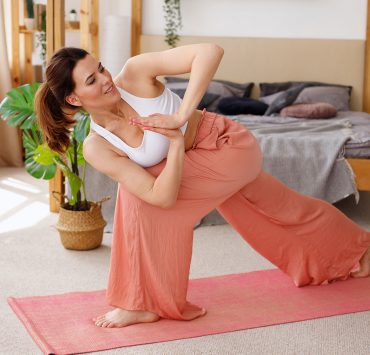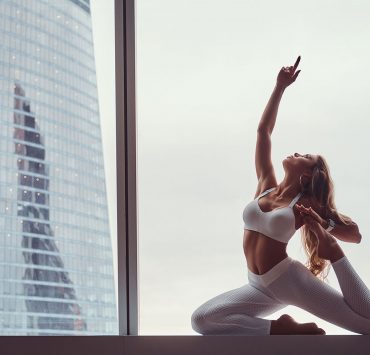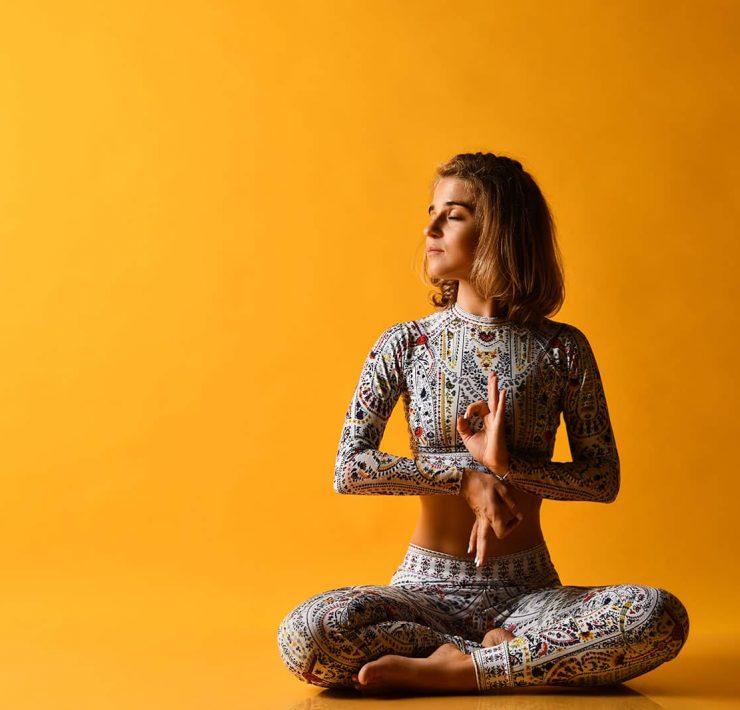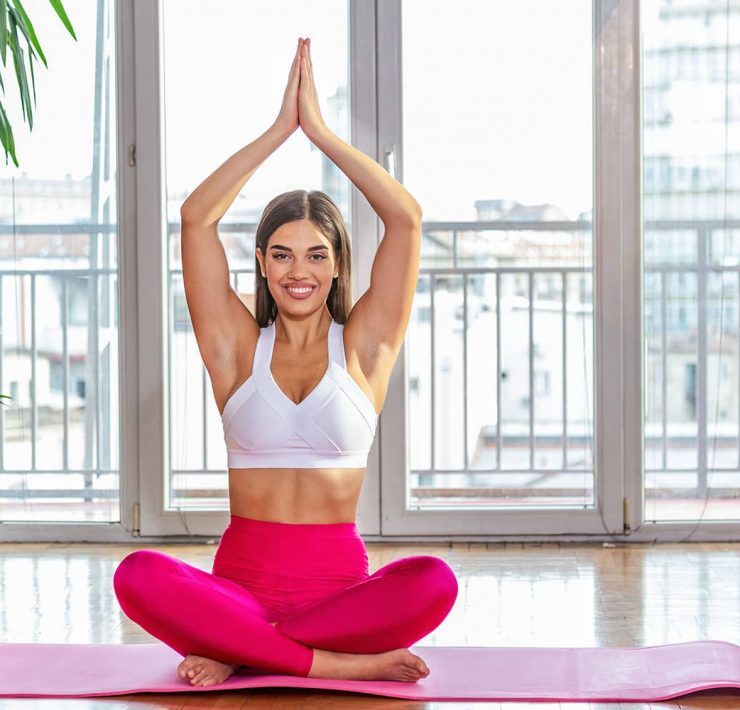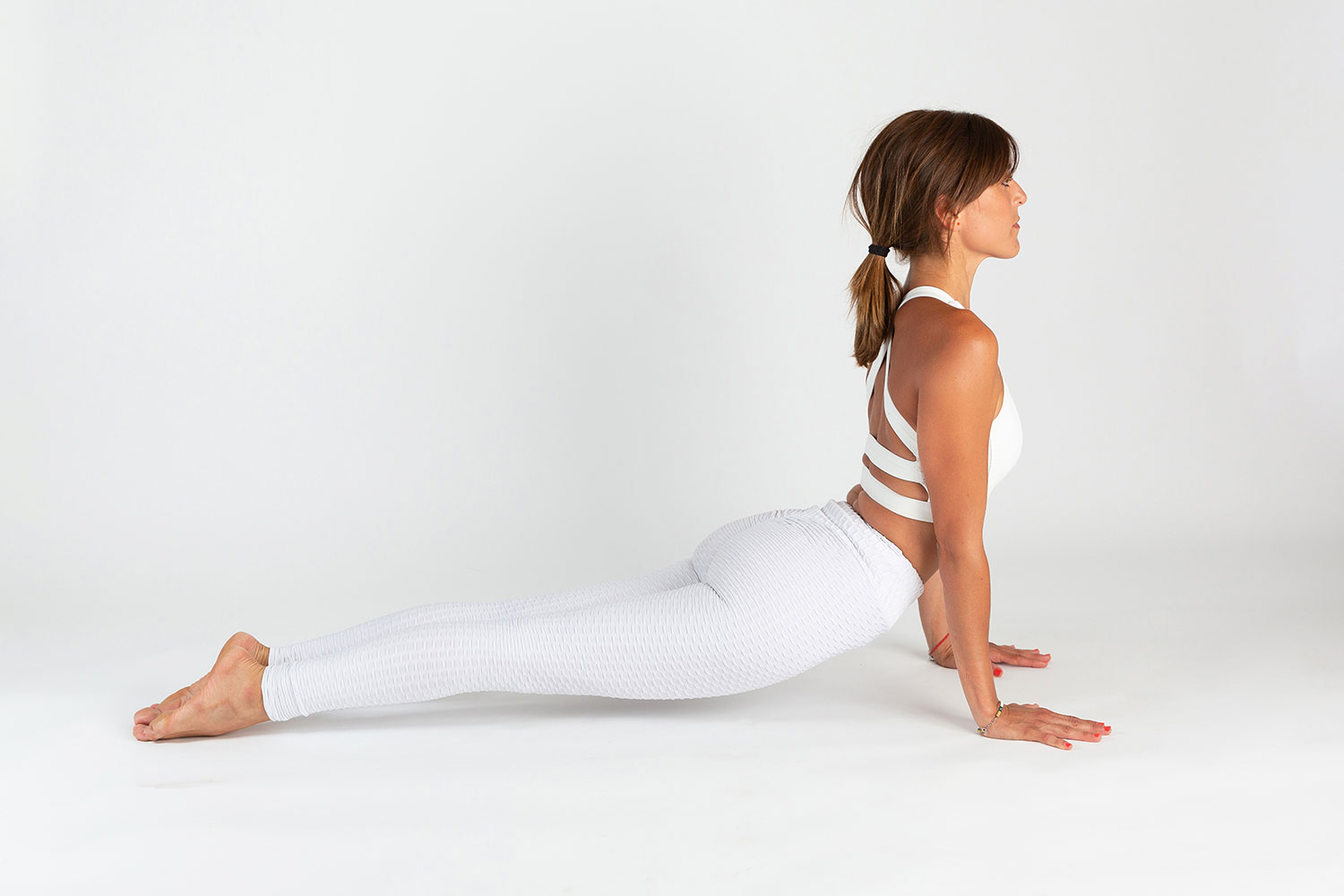
Rose graduated with a degree in Anthropology, which takes her…
Cobra pose is a foundational yoga pose that every yogi will learn at some point, no matter what style of yoga they devote themselves to. It is a low impact back bend that will help strengthen the back muscles, whilst opening and lengthening the front body. It is often practiced during sun salutations (surya namaskaras) as an alternative to upward facing dog pose (urdvha mukha svanasana).
The Sanskrit Behind Cobra Pose

As with all yoga poses, the original name of cobra pose is Sanskrit: bhujangasana.The translation of bhujangasana is not exact, but is thought to mean serpent, snake, or cobra, as the pose is aptly named in English. It is believed that cobra pose was named for the snake-like shape that the yogi makes in the pose. This is slightly unusual, as many yoga poses’ original Sanskrit names are quite literal, and refer to the body parts (hand, foot, arm, big toe) and how they anatomically connect in the pose. In cobra pose, the yogi’s lower body remains flat on the mat, whilst their upper body rises strongly up and open, as if they are a cobra rising from its coil.
How To Practice Cobra Pose: Step By Step Instructions

When practicing cobra pose, it is important to ensure you are using the correct alignment. Even more so than other yoga poses, using the wrong alignment could lead to, at best, missing out on the benefits of cobra pose, and at worse, injury. Follow these step by step instructions when practicing cobra pose.
- Lie face down on your yoga mat with your forehead pressed into the mat.
- Untuck your toes, so the tops of your feet are pressing firmly into the mat.
- Plant your palms alongside your mid-ribs. Your fingers should be pointing forward. The entire palms, including all four corners and all ten fingers, should be pressed evenly into the mat.
- Your elbows should be pointing toward the back of the room, and your arms pressed firmly against your sides. Let your shoulder blades descend down the back, opening up your chest.
- On an inhale, gently press through the palms of your hands, your pubis, the fronts of your legs, and the tops of your feet. Begin straightening the arms and opening the chest further.
- Only lift so far as you can maintain contact between the floor and your pubis bone. Keep your lower back and gluteal muscles relaxed. Your back should be strongly engaged and doing all the work – don’t dump into your shoulders or rely on your arm strength. In fact, you can even practice lifting your hands off the mat and maintaining your backbend to ensure that the lift is coming from your back muscles.
- Hold the pose for a minimum of 30 seconds your first time through.
- When you are ready, exhale and gently lower your torso back to the mat.
Cobra Pose Benefits

There are many benefits of cobra pose, and reasons to include it in your practice. Here is a selection of cobra pose benefits:
Back strengthening: In cobra pose the back is put into extension. This helps strengthen the back muscles, including the erector spinae, latissimus dorsi, trapezius, and more.
Back flexibility: Because the back is in extension, this means the natural curve of the spine is reversed in cobra pose. This will help improve spinal flexibility.
Improve digestion: Cobra pose increases blood flow to the abdominal organs and is believed to help with digestion.
Realign spine and promote disc health: As a back bend, particularly a gentle backbend, cobra pose is ideal for people with lower back pain. It will help realign the spine and bring fluid to the intervertebral discs, gently coaxing any bulging discs back into place.
Reduce stress: As with many yoga poses, the combination of intentional breathing and movement in cobra pose will help reduce stress. As the chest opens, imagine more air rushing to the diaphragm and regulating your breathing.
Improves sciatica and nerve pain: As it realigns the spine, particularly the first few vertebrae, tailbone, and coccyx, cobra pose will also help improve nerve pain and sciatica, which results from misalignment in this area.
One of the final, and most important benefits of cobra pose is that it is low impact. This makes it appropriate for most practitioners, meaning many people can benefit from this pose.
Contraindications And Precautions Of Cobra Pose

Despite being a low impact, gentle back bend, there are nevertheless some contraindications and precautions for cobra pose. Based on medical background, recent events, and more, some people should avoid cobra pose, either for the time being or altogether. Some examples of contraindications for cobra pose include:
Shoulder injury: Cobra pose puts pressure on the shoulder girdle and should be avoided among those with shoulder injuries.
Back injury: If you have a back injury, whether skeletal or muscular, you should proceed with caution when practicing cobra pose.
Wrist injury or carpal tunnel syndrome: Cobra pose puts a large amount of pressure on the wrist joint, which is a partial bodyweight support. As such, it may be painful for individuals with wrist injuries, including carpal tunnel syndrome. These individuals should avoid cobra pose or practice an alternative such as sphinx pose.
Hand injury: Similarly to wrist injuries, people with hand injuries may choose to avoid cobra pose for the pressure it puts on the hand.
Severe slipped discs: Some individuals with bulging or slipped intervertebral discs will find relief from the gentle backbend that cobra pose offers. However, individuals with severe slipped discs should consult with their doctor before trying cobra pose, to ensure that any possible misalignment doesn’t worsen their situation.
Recent abdominal surgery: Cobra pose puts pressure on the abdominal organs, pressing through this area of the body and increasing blood flow. As such, people who have recently had an abdominal surgery should wait a period of weeks, as determined by their doctor, before returning to yoga poses such as cobra pose.
Pregnancy: Women in their second and third trimesters should avoid cobra pose and other backbends that may increase risk of diastasis recti. As a gentle backbend, cobra psoe should be safe in the first trimester, but as always a doctor should be consulted first.
Diastasis recti: Individuals who are post-partum or otherwise suffering from diastasis recti should avoid cobra pose, as it will aggravate and increase the abdominal separation.
If you are not confident whether cobra pose is appropriate for you, it is best to proceed with caution and discuss your concerns with your qualified yoga teacher and a medical professional before practicing.
Modifications and Variations
If you have determined that it is safe for you to practice cobra pose, you may still be looking for a variation or modification. What are variations and modifications? They are both ways of altering a yoga pose, yet still similar enough to the original yoga pose that it can remain being practiced in sequence. A variation is typically a more challenging version of a yoga pose. A modification is typically an alteration that makes a yoga pose more accessible to individuals with injuries or limited strength and/or flexibility. The following are three variations and/or modifications for cobra pose.
Salamba Bhujangasana — Sphinx Pose

In sphinx pose, the yogi plants their forearms on the mat, with the shoulders aligned over the elbows. From this position, they backbend. This limits the range of the backbend and does not give quite as much extension as cobra pose. However, sphinx pose is an ideal modification for individuals with hand, wrist, or even shoulder injuries who cannot place pressure on these joints.
Ardha Bhujangasana — Baby Cobra Pose

Also called low cobra pose, this option is the most similar to cobra pose. The yogi simply does not lift their torso into as high of a backbend in this pose. It is a good modification for beginners, anyone with arthritis, individuals with limited strength or flexibility, those with lower back pain, and more.
Urdhva Mukha Svanasana — Upward Facing Dog Pose

This yoga pose is a variation for cobra pose. The two poses are often practiced interchangeably in the sun salutation sequence. In upward facing dog pose, the hands are planted below the shoulders. The yogi straightens the arms and backbends. However, the only points of contact with the mat are the palms and the tops of the feet, as the legs are engaged and lifted off the mat. This pose will put more pressure in the wrist and shoulder joints than cobra pose does.
Remember that cobra pose, sphinx pose, baby cobra pose, and upward facing dog pose each have their own unique alignment and benefits. However, they can still be practiced interchangeably. For instance, if you are just warming up, baby cobra pose might be best for you. As your body warms up, you could progress through cobra pose and upward facing dog pose. Listen to your body and try the pose that fits you best at any given moment.
Conclusion
Cobra pose is an essential yoga pose that it is likely most yogis will learn at some point. It is useful as a restorative backbend, as well as a more dynamic pose during a quick vinyasa or sun salutation. As with all yoga poses, the yogi should aim to practice with integrity and correct alignment, in order to avoid injuries and receive the best benefits of the posture.
What's Your Reaction?
Rose graduated with a degree in Anthropology, which takes her understanding of basic human needs to a whole new level. Her intelligence and passion for healthy living is reflected in her written work.






